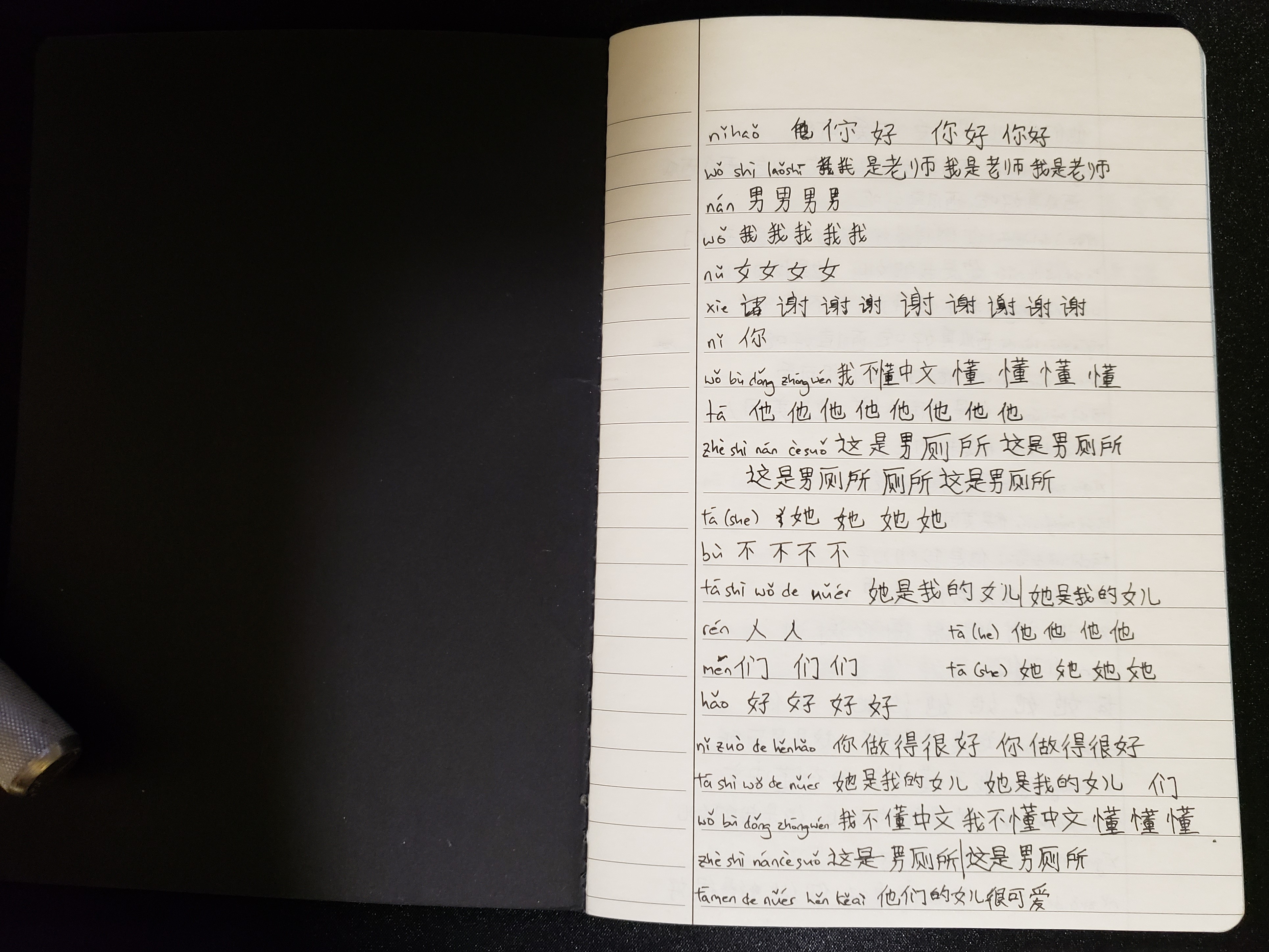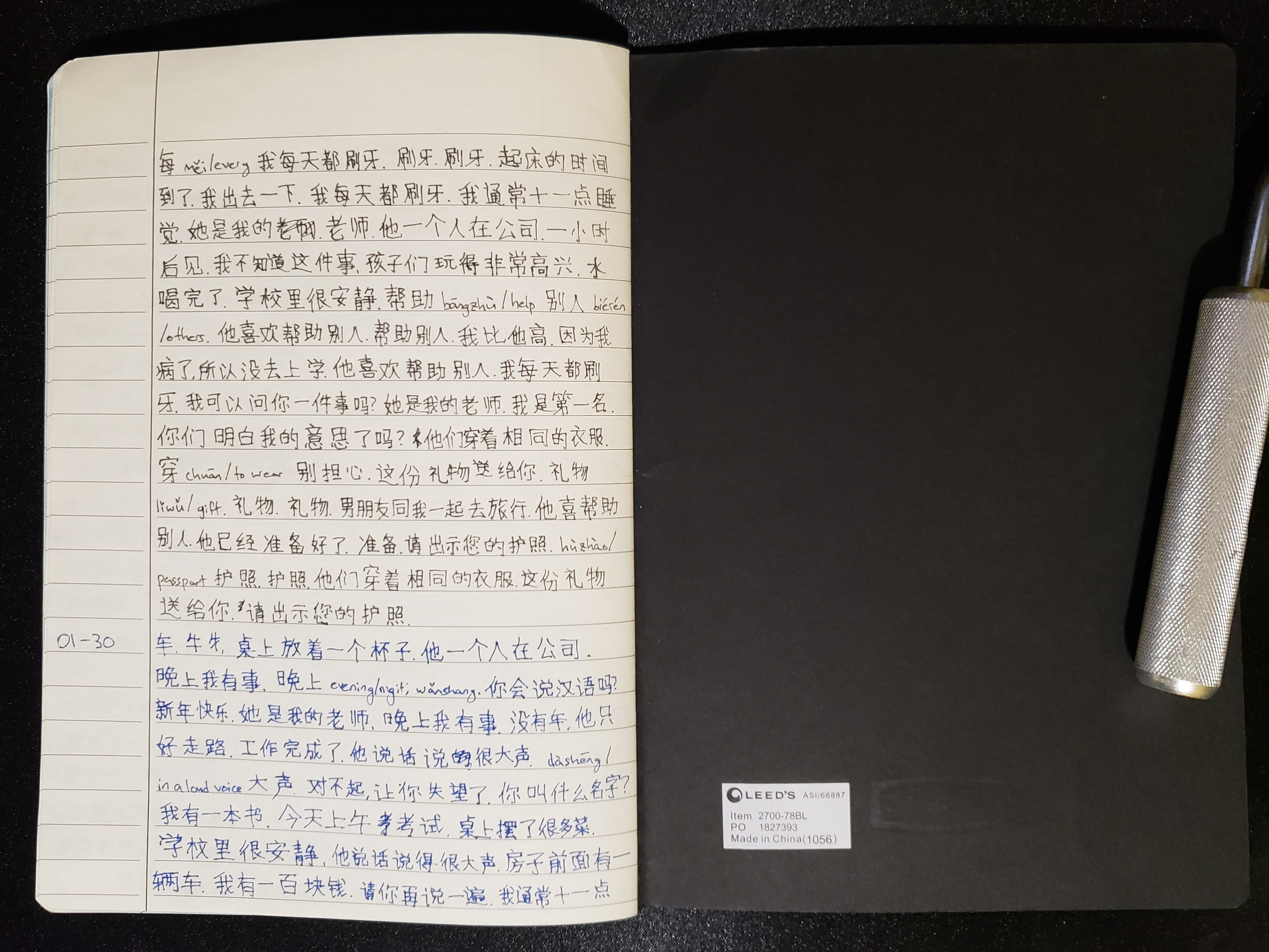Today, I filled up my 80-page notebook with Chinese practice. I have been attempting to learn Chinese on and off for the last few years and started writing in this notebook in early 2020. However, nearly half of it has been filled in during the last 1.5 months. This sparked a question in my mind: what drove this jump in productivity and consistency in studying?
Luckily, I have been loosely tracking a few metrics over the last nine months. Given my statistics background, I would be remiss to not include some numbers. But first of all, what is a keystone habit?
Keystone habit
In The Power of Habit, Charles Duhigg defines keystone habits as
“Small changes or habits that people introduce into their routines that unintentionally carry over into other aspects of their lives”1A keystone habit is the guardrail that keeps you on track. It creates a feedback loop that keeps things in motion.
For James Clear, author of Atomic Habits, working out is his keystone habit2. Once he started exercising, he started to eat better, sleep better, and write better. Once he stopped exercising, the other habits started to fall apart. Exercise has been touted as a key habit by many successful people including Tim Ferriss with plenty of research to support the claim. It is also one of the habits I have been tracking.
Exercising
The first thing to note is that I barely worked out this year. My habit of exercising was largely shattered by two factors. First, I lost the privilege of having a power rack in my bedroom about a year ago3. Second, the lack of access to a shared gym during the pandemic meant that I could not do my favourite exercises4. With the habit broken, I have been haphazardly doing some push-ups, pistol squats, and core work.
Would access to “proper” workout equipment have made exercise a keystone habit for me? I have my doubts. Weight lifting is a stressor and the programs I was running would push my body to the point of exhaustion where I would come crashing down. I would often come down with a cold for a few days – long enough to break the habit. Reflecting on this, my programming decisions should focus on sustainability. Or maybe I will take up hiking.
Verdict: probably not a keystone habit
Meditation
For me, meditation is the starting point of my habit stack5. After meditation, I write. After writing, I learn Chinese. It does not always work out that nicely but a 10-minute meditation session is less daunting than an hour of writing or learning. Once I get started, the momentum usually gets me through the rest.
Similar to my Chinese studies, I have been trying to create a habit of meditation for a few years. Having started with guided meditations from Headspace, Sam Harris, and Tara Brach, I now do unguided sessions.
Comparing meditation with learning Chinese, they sit at a correlation of 0.45. Not exactly a slam dunk but enough to show that they are related.
Verdict: maybe a keystone habit
Writing
Back in October 2020, I had the idea to write about how memes spread. I quickly realized that I only wanted to write about it to show off the fact that evolutionary biologist Richard Dawkins coined the term meme in his book The Selfish Gene6. It turns out that I know nothing about why memes spread so this idea went into the archives.
A month after this failed attempt, I read a nutrition study which I felt left out some key details. Lying in bed, I felt strangely compelled to write about it – as if I would not be able to sleep until it is out of my system. So, I got out of bed and wrote. Three months later, I have about 10 blog posts published.
The correlation is only slightly higher than meditation at 0.48 but since December 14th, I have been meditating, writing, and studying Chinese nearly every day.
Verdict: probably a keystone habit
What’s next?
Writing has been a surprise discovery for me. Beyond the obvious benefit of honing my writing skills, organizing my thoughts and finding the right words to express them has been therapeutic. It has also been a great source of learning as I dig into research papers and books.
Looking back, what really seems to work for me is the habit stack. The 10-minute meditation session is short enough that I can do it at any time. Writing gets me in a productive mindset which pushes me to get through the hard part of learning Chinese.
Although I worry about not having anything interesting left to say, I plan to continue writing until that day comes. As for learning Chinese, I have another 80-page notebook ready to be filled in.
1Duhigg, C. (2012). The power of habit: Why we do what we do in life and business. New York: Random House.
2Keystone Habits: The Simple Way to Improve All Aspects of Your Life (n.d.). James Clear. https://jamesclear.com/keystone-habits, accessed January 20, 2021.
3Quotes about the iron being your greatest friend aside, some compromises had to be made for co-habitation.
4My routine used to consist of squats, deadlifts, bench press, overhead press, and weighted chin-ups.
5How to Build New Habits by Taking Advantage of Old Ones, (n.d.). James Clear. https://jamesclear.com/habit-stacking, accessed January 22, 2021.
6Dawkins, R. The Selfish Gene. Oxford; New York: Oxford University Press, 1989.



